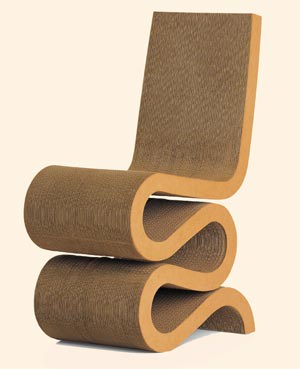Design Classic: Frank Gehry’s Wiggle side chair

Simply sign up to the Life & Arts myFT Digest -- delivered directly to your inbox.
Frank Gehry was one of the first designers to produce cardboard furniture, having created the Wiggle side chair in 1972. Manufacturers had been seeking an alternative to plastic since the 1960s but struggled to find anything that could compete with its light flexibility.
At that time, cardboard was often just a single layer and attempts to reinforce it were made by folding and inserting tabs and slots. But Gehry, who was born in 1929, came up with a solution thanks in part to childhood spent playing in his grandfather’s hardware store every Saturday morning, building villages and cities from scraps of plywood.
After a stint as a truck driver and a radio announcer, Gehry turned to architecture and eventually graduated in the 1950s.
According to Vitra, the Swiss contemporary furniture company that has produced Gehry’s cardboard furniture designs since 1986, the architect saw a pile of corrugated cardboard outside his office one day and began to experiment. He was already using cardboard to build architecture models and realised that it became very strong when glued together.
The resulting series of furniture was called Easy Edges and included the Wiggle side chair. The furniture was made by gluing layers of card in alternating directions.
The Wiggle chair and table were hugely successful but Gehry was unhappy because the prices did not conform to his philosophy that furniture should be affordable to all.
Gehry abandoned furniture design and returned to architecture. His most recognisable design is probably the Guggenheim Museum in Bilbao, Spain. Last October, he was appointed joint architect with Foster + Partners to design the High Street phase of the Battersea Power Station development in London.
Comments